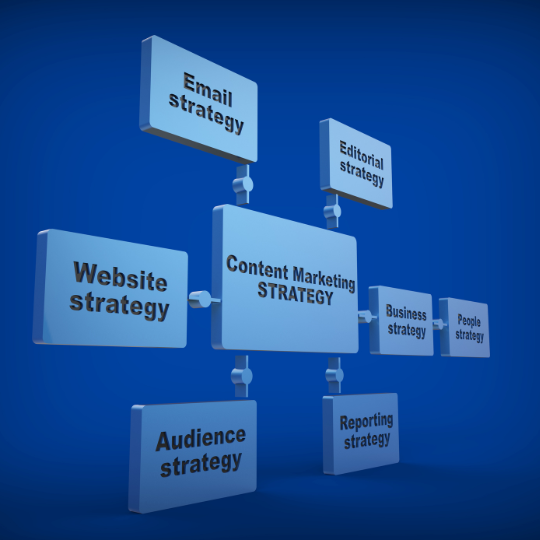Creating content in such a fast, robust environment can be time-consuming and costly, though. But repurposing is a sure way of maximizing efforts and costs in strategies of the content. It breathes life into old material, widens your reach, and potentially taps more diversified sets of your audience without rebuilding anew. However, repurposing content doesn’t save time alone but has an overall effect of multiplying and amplifying your message to all of the different platforms you’ve created content for. Here’s how to repurposing content for maximum impact.
What Is Content Repurposing?
Content repurposing is, therefore, the process of taking one piece of content and redeveloping it so that it can be used again in other formats or courses of action. Here, the key message from your original content is used to widen your reach and to expand the number of uses. Key benefits include:
- Extended Reach: You will be capable of reaching an entirely new audience when you repurpose a piece of content for a different medium. For example, you could repurpose a blog post into an infographic or video, and you would reach visual learners or viewers more than readers.
- Becomes More Engaging: Different types of content appeal to different audiences. You’re engaging with your audience as best you can, through repurpose, a podcast episode, a social media post, or even just an email newsletter.
- SEO Benefits: Update and repurposed content will, over time, be stronger with regard to search rankings too. Fresh content—if in repurposed form—tells search engines that your website is active and today’s topic-relevant.
Tips On Choosing The Content To Be Repurposed
Not all content is prime for repurposing. Consider the following for content likely to have the greatest impact:
- Evergreen Content: One that does not go out of style anytime soon—for instance, how-to-do-something guides, removable insights, and pieces of founding principles of a department or an organization—has perfect suitability for repurposing. Permanent-content additions add lasting value, and they work very well when put into new forms.
- High-Performing Content: For example, you find some blog post, video, or even a post in a social media feed that is performing fabulously and getting users to engage a lot—this is the kind of stuff that would be a very good candidate for repurposing.
- Content with Depth: There should be so much layering of information in a piece of content that it can be pulled apart to be used as several pieces of the same information, targeting a vast number of interested audiences. For example, eBooks, whitepapers, or even long-form guides can be repurposed to develop several small pieces such as blog posts, infographics, or even social media snippets.

Creative Ways To Repurpose Content
- Cool Videos: Some of the known ways that really work wonders are when content is repurposed from blog posts into videos. Video content is the trend on all platforms, so take that well-written blog post, convert it into a video script, narrate it, and attach some cool visuals.
- Turn Webinars into Ebooks or Guides: Ran any webinars? Turns out you just have a library of stuff to repurpose. You can transcribe the webinar, pull out key insights and turn them into an eBook or download guide that can double as a lead magnet on your website.
- Research Infographics: Anything that is too detailed or too painful to read as a research report or data information, all become attractive once converted into an infographic. Therefore, any kind of information on an infographic becomes shareable, more facilitating, and easier in the communication of all the information to the audience intended.
- Social Media Content Creation: Develop long-form content pieces, such as blog posts, articles, whitepapers, etc., and chunk them into small, bite-sized bits of social media content. Pull out main pull-quotes, statistics, or insights, to be shared across your social mediumst.
- Turning Written Content into Podcasts: The growing demand for podcasts gives you the ability to make the most of that demand. A good blog or an article can easily be replicated in the form of a podcast episode where you speak in detail on the topic.
Smart Planning For Repurposing
Strategic planning is key to achieving the best effects of content re-purposing. Keep the following steps in mind:
- Alignment to the Marketing Goals: At all times, repurposed content needs to be aligned with the major marketing goals set. If the purpose is in terms of brand awareness or lead generation, arrange the changed content to that end.
- Audience Preference: Different audience segments may like different content formats. Combining this with knowing what your audience would treasure most helps one be able to easily choose whatever type of content format one would want to major in the most during repurposing.
- Tailor for each platform: Every platform is specific and special, both in its requirements and audience behavior. Make sure the content is tailored to be relevant to where it is going to be posted. That same content would be better off shared in a much more visual and concise manner on Instagram.
- Make a Content Calendar: You could make a content calendar, which will aid in planning your repurposing efforts. This, in turn, makes certain that there is enough content to be doled, at a sustainable pace across channels.
CONCLUSION
Content repurposing is a strong strategy to maximize or take the most of the impact from creating a single form of content. Establishing the same piece of content in various formats allows you to expand its reach and eventually help you achieve marketing goals. Effective knowledge for how to repurposing content is all about strategically planning and knowing who your audience is; constantly measuring the impact of the efforts put in. With the dynamic scenery in the digital space, content repurposing has continued to remain the very key tool through which marketers can use up content and be vocal across different channels.



















